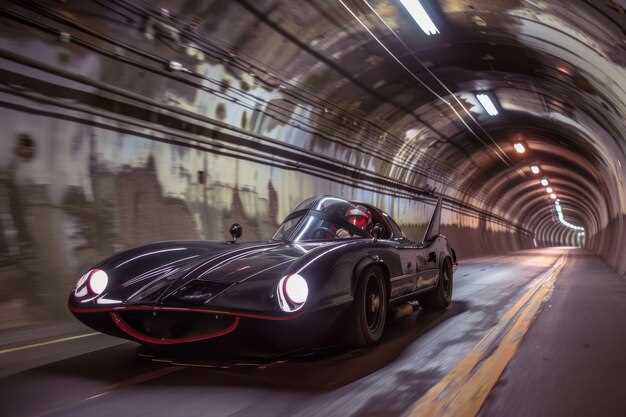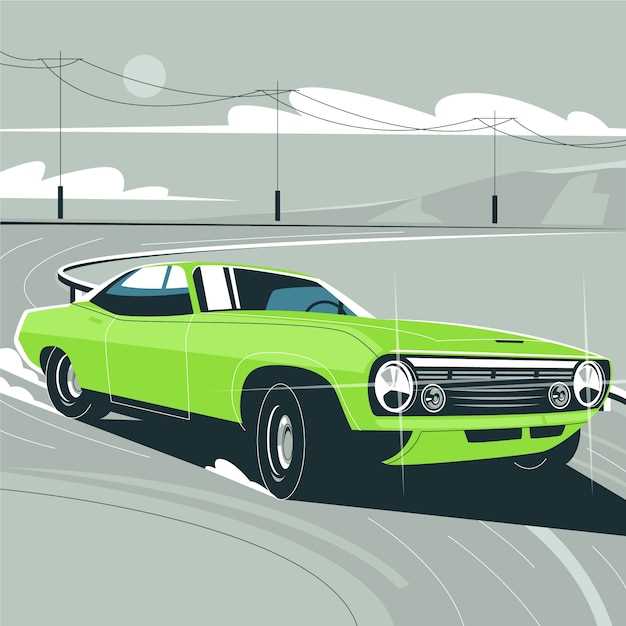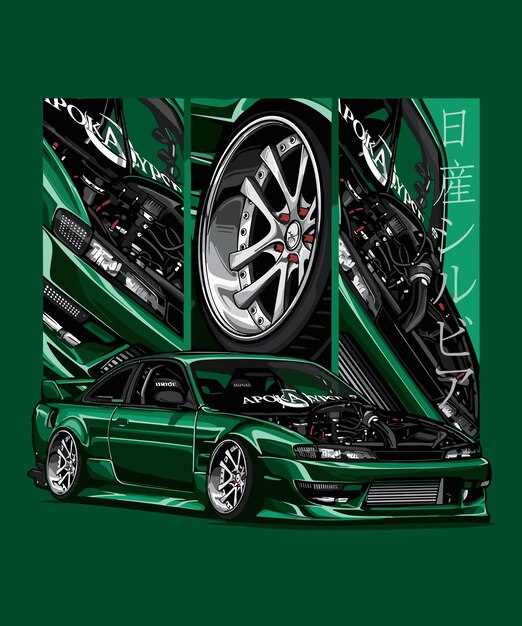
The Dodge Viper emerged as a symbol of raw power and innovative design in the automotive world. Introduced in the early 1990s, this American sports car quickly gained a reputation for its aggressive styling and high-performance capabilities. With its striking silhouette and muscular stance, the Viper challenged traditional notions of what a sports car could be, paving the way for a new breed of performance vehicles.
From its inception, the Dodge Viper was designed to evoke emotions and adrenaline. Its iconic design features, such as the elongated hood, sharp lines, and distinctive headlights, have influenced car design heritage in ways that are still evident today. The Viper’s emphasis on performance over luxury dictated a new approach to automotive aesthetics, encouraging manufacturers to prioritize speed and agility in their designs.
Moreover, the Viper’s engineering excellence, including its robust V10 engine and lightweight construction, contributed significantly to its legacy. This combination of high performance and eye-catching design solidified the Dodge Viper’s status as a benchmark in the supercar segment. Automotive enthusiasts continue to celebrate the Viper not just for its performance, but for its profound impact on the design language of sports cars that followed.
Innovative Features That Redefined Sports Cars

The Dodge Viper emerged in the early 1990s, challenging the status quo of sports car design with its aggressive styling and raw performance. One of the most significant innovations it introduced was the use of a high-performance V10 engine, which set a new standard for power in this class. This bold choice allowed the Viper to deliver exhilarating acceleration and a distinctive exhaust note, characteristics that became hallmarks of its legacy.
Another innovative feature was the Viper’s minimalist interior design, which prioritized driver engagement over luxury. The absence of excessive electronic aids and unnecessary gadgets reflected a focus on pure driving experience, a principle that many automakers later adopted. This approach emphasized the connection between driver and machine, a key trait that has influenced subsequent sports car development.
The Viper also pushed boundaries with its lightweight construction, utilizing a combination of advanced materials such as aluminum and composite components. This strategy not only enhanced performance but also improved handling dynamics, enabling better agility on the road and track. The attention to weight reduction became an essential consideration for future sports car designs.
Furthermore, the Viper redefined aerodynamics in sports cars with its distinctive shape and functional design elements. Features like the prominent front splitter and rear wing contributed to downforce, maximizing stability at high speeds. This focus on aerodynamics has become a crucial aspect of modern sports car engineering, influencing the design philosophies of many vehicles that followed.
Overall, the Dodge Viper’s innovative features created a lasting legacy. By blending raw power, driver-focused design, and advanced engineering, it not only redefined the sports car segment but also set new benchmarks that continue to resonate in contemporary automotive design.
How the Viper Influenced Contemporary Automotive Aesthetics

The Dodge Viper emerged as a symbol of raw power and unfiltered performance, characterized by its aggressive design and distinctive styling. Its legacy in car design can be seen in the evolution of contemporary automotive aesthetics, where performance cars increasingly embrace visceral design elements. The Viper’s bold lines and muscular stance inspired a generation of designers to prioritize strong visual identities that convey speed and capability.
Furthermore, the Viper’s use of sculptural forms and a low-slung profile set a benchmark for sports cars, pushing the boundaries of traditional automotive shapes. Many modern supercars incorporate similar aspects, emphasizing aerodynamics while still maintaining a fierce and aggressive look. The integration of wide fenders and sharp angles in contemporary designs can be traced back to the Viper’s powerful silhouette, showcasing how it paved the way for future vehicle expressions.
Interior design has also felt the ripple effects of the Viper’s legacy. The emphasis on driver-centric layouts and high-performance materials became a focal point for many manufacturers. Contemporary cars often reflect the Viper’s minimalist yet functional approach to the interior, prioritizing the driving experience while utilizing premium materials that echo the Viper’s commitment to quality.
As electric vehicles gain traction, the Viper’s influence persists in the adoption of dynamic design motifs that blend traditional muscle aesthetics with modern technologies. The unapologetic character of the Viper motivates automakers to maintain a connection to their performance-oriented roots, ensuring that even electrically powered models embody the spirit that the Viper championed.
Ultimately, the Dodge Viper’s impact on automotive aesthetics is profound and enduring. Its commitment to an aggressive visual language and a focus on performance continues to inspire contemporary designers who seek to blend the legacy of the past with the innovations of the future.
The Enduring Legacy of the Viper in Modern Performance Vehicles
The Dodge Viper has left an indelible mark on the automotive landscape that continues to influence modern performance vehicles. Its unique combination of raw power, distinctive design, and driving experience has set a benchmark in the supercar segment.
Key aspects of the Viper’s legacy include:
- Raw Performance: The Viper was renowned for its massive V10 engine, which provided exhilarating horsepower and torque. This emphasis on performance has pushed manufacturers to refine their own powertrains, often prioritizing sheer power over refinement.
- Design Philosophy: The aggressive lines and muscular silhouette of the Viper have inspired numerous contemporary sports cars. Designers draw from the Viper’s aesthetic to create vehicles that embody performance and aggressiveness.
- Driver-Focused Experience: The Viper prioritized a connection between driver and machine. Modern performance vehicles often mimic this approach, offering features that enhance driver engagement rather than relying solely on technological aids.
- Track-Capable Engineering: The Viper was built for both the road and the track. Its rigorous engineering standards have influenced the development of modern performance models that offer similar capabilities, balancing everyday drivability with track-ready performance.
- Community and Culture: The Viper has cultivated a passionate community of enthusiasts. This sense of belonging has encouraged manufacturers to foster similar cultures around their performance models, creating events and clubs that celebrate high-performance vehicles.
In conclusion, the Dodge Viper not only defined what a performance vehicle should be during its production years but also serves as a lasting reference point for automotive designers and engineers. Its legacy inspires the creation of modern supercars that strive for the same levels of excitement, performance, and aesthetic appeal.



